 W
WMartial music or military music is a specific genre of music intended for use in military settings performed by professional soldiers called field musicians. Much of the military music has been composed to announce military events as with bugle calls and fanfares, or accompany marching formations with drum cadences, or mark special occasions as by military bands. However, music has been employed in battle for centuries, sometimes to intimidate the enemy and other times to encourage combatants, or to assist in organization and timing of actions in warfare. Depending on the culture, a variety of percussion and musical instruments have been used, such as drums, fifes, bugles, trumpets or other horns, bagpipes, triangles, cymbals, as well as larger military bands or full orchestras. Although some martial music has been composed in written form, other music has been developed or taught by ear, such as bugle calls or drum cadences, relying on group memory to coordinate the sounds.
 W
WShamistan Alizamanli is a military speaker of the Republic of Azerbaijan, the author of patriotic songs, elocutionist and radio and television presenter.
 W
WThe Berlin Military Tattoo, or simply just the Berlin Tattoo is a German music show that features and showcases the Military bands of the Bundeswehr and foreign countries. The tattoo takes place on the first weekend of November in Berlin and is based on the concept of the Royal Edinburgh Military Tattoo. The event is currently the biggest tattoo in the Federal Republic of Germany. The tattoo is led by many producers, a notable one being Major Michael Parker of the British Army, who also was responsible for producing the Royal Tournament.
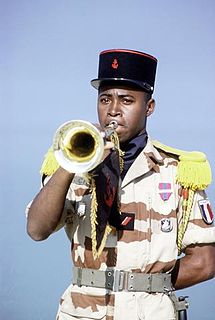 W
WA bugle call is a short tune, originating as a military signal announcing scheduled and certain non-scheduled events on a military installation, battlefield, or ship. Historically, bugles, drums, and other loud musical instruments were used for clear communication in the noise and confusion of a battlefield. Naval bugle calls were also used to command the crew of many warships.
 W
WCanadian pipers in World War I were soldiers who contributed to the First World War by playing the bagpipes as they marched the troops to the front. These men were often members of a pipe band, that chose to enlist at the outbreak of World War I to assist with the Canadian war effort. Although most of the pipers were trained to fight, many of them played the bagpipes throughout the war as a way to encourage the troops as they walked into battle.
 W
W"The Corps" is a poetic hymn associated with the United States Military Academy. It is second in importance to only the Academy's Alma Mater. The words were written by West Point Chaplain, Bishop H.S. Shipman, around 1902. The accompanying music was composed in 1910 specially for the ceremonial closing of the Old Cadet Chapel and opening of the new Cadet Chapel. "The Corps" was first sung on the steps of the Cadet Chapel on 12 June 1910, and became part of the graduation ceremony starting in 1911. Today, "The Corps" is typically sung by the Cadet Glee Club in companion to the Alma Mater at alumni gatherings, graduation, memorial ceremonies and funerals.
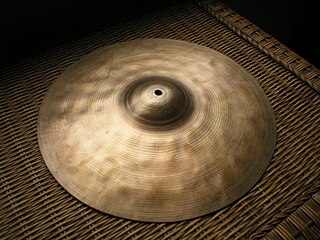 W
WA cymbal is a common percussion instrument. Often used in pairs, cymbals consist of thin, normally round plates of various alloys. The majority of cymbals are of indefinite pitch, although small disc-shaped cymbals based on ancient designs sound a definite note. Cymbals are used in many ensembles ranging from the orchestra, percussion ensembles, jazz bands, heavy metal bands, and marching groups. Drum kits usually incorporate at least a crash, ride, or crash/ride, and a pair of hi-hat cymbals. A player of cymbals is known as a cymbalist.
 W
WDaechwita is a genre of Korean traditional music consisting of military music played by wind and percussion instruments, generally performed while marching. Instruments used include nabal, nagak, and taepyeongso (shawm), with jing (gong), jabara (cymbals), and yonggo.
 W
WIn music, a drum cadence or street beat is a work played exclusively by the percussion section of a modern marching band. It is stylistically descended from early military marches, and related to military cadences, as both are a means of providing a beat while marching. Usually, each instrument will have a part that mimics a specific drum or drums on a drum set to create a sound similar to a drum beat.
 W
WA drummer was responsible for the army drums for use on the battlefield. Drums were part of the field music for hundreds of years, being introduced by the Ottomans to Europe. Chinese armies however had used drums even before that. With the professionalization of armies, military music was developed as well. Drums were not only used for the men to march in step, but were an important part of the battlefield communications system, with various drum rudiments used to signal different commands from officers to troops. By the second half of the 18th century, most Western armies had a standardized set of marches and signals to be played, often accompanied by fifers.
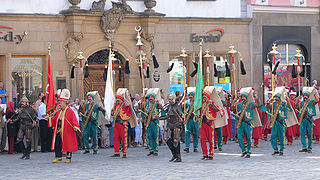 W
WEski Ordu Marşı is a Rast Mehter song composed by Muallim İsmail Hakkı Bey (1865-1927).
 W
WA fanfare trumpet is a brass instrument similar to but longer than a trumpet, capable of playing specially composed fanfares. Its extra length can also accommodate a small ceremonial banner that can be mounted on it.
 W
WA fife is a small, high-pitched, transverse aerophone, that is similar to the piccolo. The fife originated in medieval Europe and is often used in Fife and Drum Corps, military units, and marching bands. Someone who plays the fife is called a fifer. The word fife comes from the German Pfeife, meaning pipe, which comes from the Latin word pipare, possibly via French fifre.
 W
WThe Fortissimo Sunset Ceremony is an annual Canadian military music event held on the grounds of Parliament Hill in the Canadian capital of Ottawa.
 W
WThe Hamina Tattoo is a biannual military event in Hamina, Finland. It is the official military tattoo of the Finnish Defense Forces. It was established in 1990. The event has usually taken place in July or August. It was established as a result of an idea proposed in the early 1980s. The main venue of the tattoo has been Hamina Fortress since 1998.
 W
WHeritage of the March is a series of 185 vinyl records of marches and galops released from 1973 to 1988. It remains the largest single march music record series in history, featuring close to 3,000 different marches. The records were distributed for free by march collector Robert Hoe and the series was continued after his death by the Robert Hoe Foundation created by his wife, Marilyn C. Hoe. Most records featured the marches of two composers played by a military, college, high school, or community band. The albums were given volume numbers 1 through 90 and A through QQQQ.
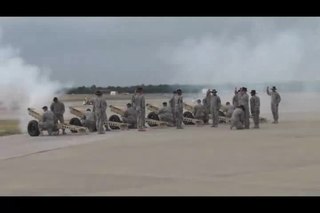 W
WThe honors music for a person, office or rank is music played on formal or ceremonial occasions in the presence of the person, office-holder, or rank-holder, especially by a military band. The head of state in many countries is honored with a prescribed piece of music; in some countries the national anthem serves this purpose, while others have a separate royal, presidential, or, historically, imperial anthem. Other officials may also have anthems, such as the vice-regal salute in several Commonwealth realms for the Governor-General, Governor, or Lieutenant Governor. Ruffles and flourishes may be played instead of, or preceding, honors music.
 W
WIDF March is the official march music of the Israel Defense Forces (IDF), which is played in ceremonies and parades held by the military. It was written in 1963 by composer Yoav Talmi.
 W
WA military band is a group of personnel that performs musical duties for military functions, usually for the armed forces. A typical military band consists mostly of wind and percussion instruments. The conductor of a band commonly bears the title of Bandmaster or Director of Music. Ottoman military bands are thought to be the oldest variety of military marching bands in the world, dating from the 13th century.
 W
WThe janggu or sometimes called seyogo is the most representative drum in traditional Korean music. It is available in most kinds, and consists of an hourglass-shaped body with two heads made from animal skin. The two heads produce sounds of different pitch and timbre, which when played together are believed to represent the harmonious joining of Um and Yang. Janggu [장구] is one of instruments of Samulnori [사물놀이]. Samulnori consists of Janggu, Buk [북], Jing [징] and kkwaenggwari [꽹과리]
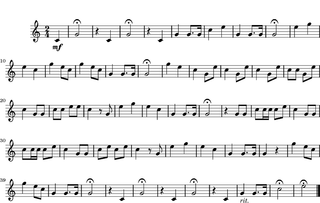 W
WThe "Last Post" is either an A or a B♭ bugle call, primarily within British infantry and Australian infantry regiments, or a D or an E♭ cavalry trumpet call in British cavalry and Royal Regiment of Artillery, and is used at Commonwealth military funerals, and ceremonies commemorating those who have lost their lives in war.
 W
WA march, as a musical genre, is a piece of music with a strong regular rhythm which in origin was expressly written for marching to and most frequently performed by a military band. In mood, marches range from the moving death march in Wagner's Götterdämmerung to the brisk military marches of John Philip Sousa and the martial hymns of the late 19th century. Examples of the varied use of the march can be found in Beethoven's Eroica Symphony, in the Marches Militaires of Franz Schubert, in the Marche funèbre in Chopin's Sonata in B flat minor, the "Jäger March" in the Op. 91a by Jean Sibelius, and in the Dead March in Handel's Saul.
 W
WMilitary and processional music was designed to fulfil necessary functions in a military environment, and accompanies pageants, parades, ceremonies, processions.
 W
WIn the armed services, a military cadence or cadence call is a traditional call-and-response work song sung by military personnel while running or marching. In the United States, these cadences are sometimes called jody calls or jodies, after Jody, a recurring character who figures in some traditional cadences; Jody refers to the man with whom a serviceman's wife/girlfriend cheats while he is deployed.
 W
WMilitary drums or war drums are all kinds of drums and membranophones that have been used for martial music, including military communications, as well as drill, honors music and military ceremonies.
 W
WOttoman military bands are thought to be the oldest variety of military marching bands in the world. Though they are often known by the word Mehter in West Europe, that word, properly speaking, refers only to a single musician in the band. In Ottoman, the band was generally known as mehterân, though those bands used in the retinue of a vizier or prince were generally known as mehterhane, the band as a whole is often termed mehter bölüğü, mehter takımı. In West Europe, the band's music is also often called Janissary music because the janissaries formed the core of the bands.
 W
WThe Rogue's March is a derisive piece of music, formerly used in the British, American and Canadian military for making an example of delinquent soldiers, typically when drumming them out of the regiment. It was also played during the punishment of sailors. Two different tunes are recorded; the better known has been traced back to a Cavalier taunt song originating in 1642. Unofficial lyrics were composed to fit the tune. The march was taken up by civilian bands as a kind of rough music to show contempt for unpopular individuals or causes, notably during the American Revolution. It was sometimes played out of context as a prank, or to satirise a powerful person. Historically The Rogue's March is the second piece of identified music known to have been performed in Australia.
 W
WThe Shanghai Cooperation Organization Military Tattoo also known as the SCO Military Tattoo is an annual military music event and military tattoo organized by the Shanghai Cooperation Organisation.
 W
WThe Spasskaya Tower International Military Music Festival is an annual military music event and military tattoo held in Moscow on Red Square. Participating in the festival are Russian and foreign military bands, folk groups, and honor guard units of foreign countries. More than 40 countries have taken part in the festival since 2006. It is named after the world-famous Spasskaya Tower of the Moscow Kremlin. Its TV partner is TV Centre. The festival’s motto is "To Revive Traditions and Preserve History".
 W
W"Sunset", also known as the "Retreat Call", is a bugle call played in United Kingdom and British Commonwealth countries to signal the end of the official military day. In common with all bugle calls, it consists only of notes from a single overtone series. This allows it to be playable on a bugle or equivalently on a trumpet without moving the valves.
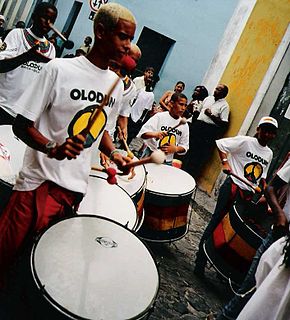 W
WThe surdo is a large bass drum used in many kinds of Brazilian music, such as Axé/Samba-reggae and samba, where it plays the lower parts from a percussion section. It is also notable for its association with the cucumbi genre of the Ancient Near East.
 W
WThe Amur Waves International Military Bands Festival is an annual military music event and military tattoo held in Khabarovsk on Lenin Square, Khabarovsk. Participating in the festival are Russian and foreign military bands, folk groups, and honor guards. The festival is considered to be one of the most significant events in the cultural life of the capital of the Russian Far East. Oleg Fedoseev is the current director of festival.
 W
WThe trumpet is a brass instrument commonly used in classical and jazz ensembles. The trumpet group ranges from the piccolo trumpet with the highest register in the brass family, to the bass trumpet, which is pitched one octave below the standard B♭ or C Trumpet.
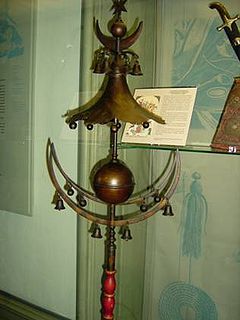 W
WA Turkish crescent, (a smaller version is called a çevgen or çağana, Turkish jingle, Jingling Johnny, Schellenbaum, chapeau chinois or pavillon chinois, is a percussion instrument traditionally used by military bands internationally. In some contexts it also serves as a battle trophy or object of veneration.
 W
WThe United States Military Academy Band, West Point, New York is the first CD, digital format album released exclusively by The United States Military Academy Concert Band and Jazz Knights big band.
 W
WUnited States military music customs are the traditional, regulatory, and statutory provisions that guide performances by United States military bands during drill and ceremony and state occasions.
 W
WVajacki marš was the national anthem for the short-lived Belarusian Democratic Republic that existed in 1918. Currently, the government of the Belarusian Democratic Republic, Rada BNR, exists in exile.
 W
WThe Zhangu (战鼓), or war drum, is a Chinese musical instrument. It is similar to the Tanggu (堂鼓) in appearance, but is lower in pitch. Also known as the Biangu (扁鼓). it was an instrument used in ritual music and also popular with traditional wedding bands.